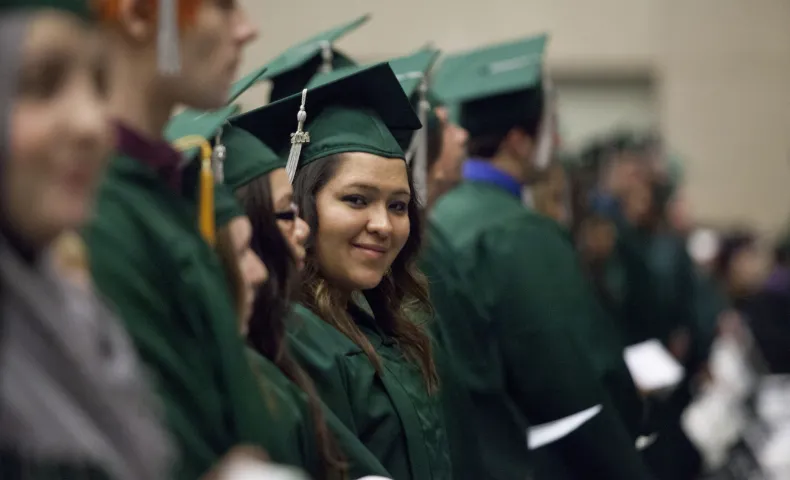 Photo by Flickr user COD Newsroom
Photo by Flickr user COD Newsroom
Let’s Make College Affordable
Education has long been thought of as a powerful equalizer in our society, creating pathways to opportunity and economic mobility. Yet the Covid-19 pandemic has laid bare the challenges facing too many students and families when it comes to getting an affordable college education and staying in school. At the Haas, Jr. Fund, we’re joining with others to learn more about the problem in California and what it’s going to take to solve it.
Based on conversations over the past year with young people, advocates and organizers working for change, colleague funders, and others, we believe students across California are dealing with a trail of broken promises. Many students of color and students living on low incomes are striving to continue their education beyond high school. Yet, enrollments are slipping as the pandemic continues and as levels of wealth and income inequality hit record highs. And among those who have tried to stay the course and continue their education, many are barely scraping by—working excessive hours, skipping meals, some even living on the streets. When they leave college, these same students are disproportionately strapped with runaway debt that their salaries cannot absorb.
Assessing the Problems
We have known these challenges existed for a while—it’s why Haas Jr. launched our new College Success program last year. But frankly, we’ve been shocked to learn how extensive the problems are:
- Although California continues to be a national leader in defraying the cost of tuition for low-income students, the challenge for many is non-tuition costs, such as books, supplies, food, and housing. On average, California college students report that their non-tuition costs total about $22,302 per nine-month academic year.
- The California Community Colleges (CCC) system is not fulfilling its mission of offering an affordable choice for the state’s most vulnerable populations. Less than half of CCC students receive need-based financial aid
- The Covid-19 pandemic has led to historic drops in applications and enrollment among disadvantaged students. In the 2020-21 academic year, headcount at California community colleges fell by 17 percent. Applications to many California State University campuses also have seen significant declines.
- Students of color are bearing the brunt of the college affordability crisis. Four years after graduation, almost half of Black borrowers owe 12.5 percent more than what they borrowed due to interest, while 83 percent of white borrowers owe 12 percent less than they borrowed. And over half of Black students say their student loan debt exceeds their net worth.
Moving to Solutions
At the Haas, Jr. Fund, we believe that all Californians should be able to realize their most ambitious educational dreams. It’s why we have partnered with UC Berkeley for decades to support scholarships and create a welcoming and supportive environment for students of color on the Cal campus. Now, we’re taking this commitment to a new level by teaming up with others to explore strategies to ensure the availability of an affordable, high-quality higher education for all Californians.
In the past year, we have engaged with an advisory board of leaders in higher education policy, youth organizing, civil rights, immigrant rights, and the private sector. In the course of these conversations, we’ve seen how advocates often have different views on strategies and goals. Some argue for free college. Some insist that targeted financial aid for those with the lowest incomes is the best solution. Others say we need to cancel student debt. And still others say we need to crack down on unscrupulous loan providers and private for-profit colleges.
All of these are important ideas to explore, and it’s not unusual—and even healthy—for social movements to be founded on varying ideas about the best avenues for change. Right now, we’re drawing on the experience of other movements—including the Haas, Jr. Fund’s involvement in the movement for marriage equality—to identify what works as we strive to accommodate different viewpoints, bridge divides, and foster coordination.
One strategy most everyone agrees on is the need to build a groundswell for reform. Given the scope and scale of the problem, it’s time to spark a powerful bottom-up push to make college affordable for students of color and low-income students. We need to listen to those who are “closest to the pain”—the college students and student loan borrowers who are trying to get ahead—as well as those with equity-grounded expertise in key policies and systems.
In the weeks and months ahead, we are committed to more listening and learning, even as we and our partners begin to test promising solutions. If you are interested in joining us on this learning journey, please reach out. Together we can restore the principles of equality, opportunity, and hope to higher education in California and beyond.